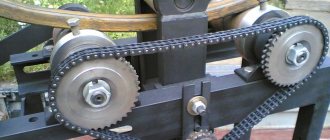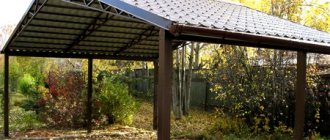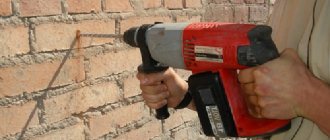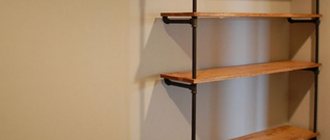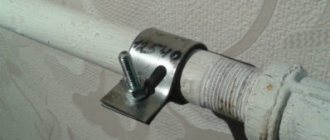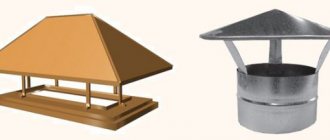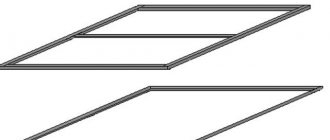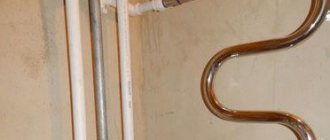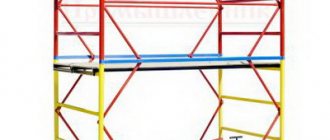Making a paper pipe. — Parkflyer
Despite all the seeming primitiveness of the technology, the production of paper pipes (bushings) contains a sea of different subtleties. Everything plays a significant role - the paper used, the mandrel, the glue and even the organization of the workplace. It should be convenient to work. Paper has different strength, resistance to moisture and ability to warp when moistened, and different grades of paper shrink differently when dried. It is worth remembering and taking into account the properties of paper during work. More often than others, modelers have to look at ordinary stationery paper, whatman paper, wrapping paper, and craft paper. To make the most of your visit to McDuck, you can order ice cream to go, they will give it to you in a branded paper bag made from good craft - it might come in handy! In any case, you will have to adapt to a particular type of paper, experiment, and try it in practice.
Everything plays a significant role - the paper used, the mandrel, the glue and even the organization of the workplace. It should be convenient to work. Paper has different strength, resistance to moisture and ability to warp when moistened, and different grades of paper shrink differently when dried. It is worth remembering and taking into account the properties of paper during work. More often than others, modelers have to look at ordinary stationery paper, whatman paper, wrapping paper, and craft paper. To make the most of your visit to McDuck, you can order ice cream to go, they will give it to you in a branded paper bag made from good craft - it might come in handy! In any case, you will have to adapt to a particular type of paper, experiment, and try it in practice.
In theory, everything is suitable. The situation is the same with glue - both paste (flour, starch potato or rice paste is very good), and casein, and dextrin, and PVA are suitable. Some people will need epoxy - there are different cases. All have different adhesive ability, thickness, penetration, water resistance, and operating time. And again, in practice you will have to adapt to the use of a specific glue. Tools . First of all, you need a mandrel , often also called a mandrel - a rod or tube of a regular round shape with a smooth outer surface and sufficient strength for the work being done. The material can be different - metal, wood, plastic, etc. The diameter of the fitting corresponds to the required internal diameter of the pipe. Sometimes, to make it easier to remove the paper pipe from the seal, it is necessary to use a separating lubricant : soap, wax, petroleum jelly, silicone grease, VD-40, etc. Sometimes, to compensate for the shrinkage of the paper tube after drying, you can use winding on the mandrel to the required thickness of a thin Mylar film; at the same time, it will also facilitate the process of removing the finished paper tube from the mandrel. Cling film and tape are also suitable. The desktop should also have a flat, clean, smooth surface, preferably waterproof. Irregularities in the working table will be imprinted on the surface of the tube. A good option is to work on a sufficiently sized piece of chipboard, cheap and cheerful. You can roll the paper onto the mandrel with your palm, but more interesting results are obtained when using a special tool called a “rollbret” (from German rollen - roll, das Brett - board), i.e. in our opinion - “wheelchair” or “roller” . A professional tool designed for everyday hard work has handles on the top side for comfortable holding, while an improvised roller can look like any board with a smooth, even working surface and sufficient dimensions. It will be more convenient to apply the glue with a wide brush , preferably one that does not lose bristles. a slightly damp cotton rag at hand ; a piece of an old sheet or pillowcase will do just fine. “Slightly damp” means wet and squeeze thoroughly; there should be no drips from the rag and no puddles should remain.
Technical process. For example, a pipe 200 mm long is rolled from rolled packaging paper (sold at OBI) on PVA, on a 16 mm mandrel. Those. its length is 12.5 calibers. The main problem of making long thin paper pipes is not so much the knurling itself, but how to then remove this pipe from the lining. Especially if the pipe is also thin-walled. We place the paper blank on the work table, apply a warp and make the first turn, tucking the end of the sheet under the warp with our fingers. We check and align the right edge of the paper strip with the edge of the sheet, then the tube will roll smoothly. We check that the warp is tightly and evenly covered with the paper blank. If everything is good, we roll the heel 1-2 mm onto the tail of the workpiece and press it against the table with one hand so that the workpiece does not unwind while we coat it with glue with the other hand.
If the workpiece is long, there is no need to coat it all with glue at this stage - the paper will have time to get wet, warp, and folds or tears will appear when knurling. It is enough to apply glue to the width of the brush and immediately roll this part. Now the tube will no longer unwind.
Lightly moisten the remaining tail of the sheet with a damp cloth, coat it with glue and roll the entire pipe to the end.
We remove excess glue from the rolled tube with a rag, and smooth the seam with it. And we wipe the table if necessary.
A lot of glue means a lot of wiping, and excess glue likes to get under the pipe and stick it to the warp. We place the rolled tube on the table, cover it with a roller blade and roll it in the same direction in which it was rolled. The working stroke is from yourself, we press and roll the finished tube on the mandrel on the table, on the reverse movement there is no need to press on the roller, we simply return to the starting position. And so 3-4 times. After this procedure, we try to carefully move the tube onto the trimmed edge of the mandrel, tightening it and at the same time turning it from side to side on the mandrel. We remember that when turned in one direction, the damp paper tube will tend to tighten around the navoynik, while in the other direction the navoynik will push this noose away from itself. Having locked a couple of pipes at this stage, you can already feel with your hands which direction to twist, how to tighten, whether it is necessary to change the thickness of the glue or, perhaps, the surface of the seal needs to be lubricated.
If our foil has a cut-off end, we move the sleeve towards it and trim the end of our paper pipe with a sharp knife. If the pipe does not have a straight end, you can cut the tube straight with a knife on a table, on a lathe, or you can come up with a simple device for this operation - it all depends on availability, desire, necessity and expediency.
Now I often use another method of winding the initial section of the pipe, when this section of the workpiece is bent to the width of the first turn and the first turn is thus made not in one layer, but in two.
They folded it, aligned it, greased the tail from below, applied it, turned the warp a little - created tension on the paper, greased the tail from above and stamped the initial section. Next we proceed as described above. This is how the tubes turned out in the end
Now the tubes are damp and need to be thoroughly dried before further use. The paper tube should not dry too quickly - it will warp, so there is a reason to dry it naturally. To do this, I usually wrap the freshly rolled tubes in a couple of layers of newspaper and leave them for a day or two away from drafts and heat sources.
To calculate the required length of a paper strip for rolling tubes of a given diameter and wall thickness, at one time I quickly wrote a primitive script in Perl: (blatt.pl) The working algorithm is the simplest - we consider our pipe a multilayer cylinder of N-layers, determine the circumference each layer and sum them up. Knowing the diameter of the mandrel, the thickness of the paper sheet and the number of layers (i.e., the required thickness of the tube wall, because the thickness of the paper is known), we obtain the required length of the paper blank. The width of the workpiece will be the length of the paper tube.
In conclusion, I note once again that, by analogy, you can make tubes from glass and carbon fiber, balsa or any other veneer, ceiling or depron - you never know what may be required in creative practice. And it’s better to do it once than to google it a hundred times; no one will give you your personal experience except you. Thank you for attention! And, according to tradition - creative success!
Areas of application
Pipes made of pressed cardboard are most often produced to order and sold in wholesale and retail trade. They are used to produce various rolled materials and products. The cardboard sleeve has found its application both in various sectors of the national economy and in domestic conditions.
It is used for winding:
- roll-type polymer materials: technical, food stretch film, transparent and colored tape, runway;
- rolled materials for textile production: artificial and natural fabrics, threads, yarn, fibers;
- roll-type materials for the pulp and paper industry: corrugated cardboard, toilet paper, paper for office equipment, self-adhesive labels, parchment, offset paper, paper for the production of bags;
- materials for construction purposes: steam and waterproofing polyethylene foam materials, roofing felt, sandpaper, construction mesh, insulating tape;
- packaging materials: household twine, linen twine, packaging tape, double- and single-sided adhesive packaging film.
How to Smoking Weed Without Paper (10 Alternatives to Rolling Paper)
So, are you out of rolling papers?
Don't worry, there are plenty of alternatives to rolling a joint—and now is the time to find that old hookah you bought on vacation a few years ago.
Everyone has a hookah in their basement, right?
Even if you don't have any, we've put together some ideas on how to properly stone household items (like hot knives).
Part 1: Household Alternatives to Roll Paper
If you don't have any of the tools and devices described above, it's time to find a solution in what you already have at home.
Learn how to easily make a pipe from household items in six different ways.
#1) Fenty blotters
The potty princess (aka Rihanna) just launched her own line of beauty products. We still don't know if that was her intention, but her blotters look a lot like rolled up papers.
Those who have tried rolling weed in Fenty blotter paper aren't particularly impressed. Looks like you'll only be able to roll a joint with them if you're very experienced.
However, users report that Riri blotters fade much faster than rolled ones, but they can help if that's the only thing rolling around you.
#2) Corn Husks
This is also a great solution in case of an emergency, so during corn season, don't throw your corn husks in the trash. In Jamaica and even California, corn husks are used as a natural alternative to rolling paper.
Even dry corn husks burn slowly and hold weeds securely due to their fibrous structure.
#3) Hot knives
This is one of the oldest methods of smoking hashish and small pieces of cannabis.
Turn the stove to medium heat and place the stainless steel blades over the burner. Be aware of hot hands to avoid getting burned. When the knives are hot enough, place the bud on the end of one knife and squeeze it with the other.
You'll see smoke almost immediately, so be prepared to inhale it. You can also use an empty toilet paper roll to help you breathe easier.
#4) Empty cigarette
Real stoners don't even like to think about this method, but when there's nothing left but a cigarette, I say go for it.
If you smoke or have a friend who smokes cigarettes, simply roll the cigarette gently between your fingers to release the tobacco. After smoking, carefully fill the cigarette with weed.
You should also try removing the filter with a needle and replacing it with a joint.
#5) Gum Wrapper
But not all gum wrappers. Most chewing paper consists of two layers of paper: a thin foil and an even thinner sheet of paper.
This is a tough question since you must be an ex
.
General information
When making cardboard sleeves, you can use a spiral and direct method of winding (winding) layers of paper of different densities.
Rolled products are made from cellulose or waste paper. The manufacturer's logo is often depicted on the outside of the pressed cardboard tube, which can be any color. Winding pulp and paper roll materials is much cheaper than manufacturing cylindrical glass, metal, plastic, and wooden analogues.
If we talk about standardization as such, then the wall thickness, diameter, length of pressed cardboard pipes, and other product parameters can be arbitrary, depending on the wishes of the customer. Although, all products must comply with the uniform requirements of TU 5450–003–11499586–98.
Clay
Clay pipes were once widespread, but today they are most often used as a unique gift or souvenir. The pipe may be made entirely of clay or have only a clay bowl.
It is not very convenient to use a clay pipe for its intended purpose, because it is fragile, cracks due to temperature changes (it cannot be smoked in the cold), and gets very hot. But clay pipes decorated with carvings and various ornaments look great as an element of the collection.
Foam
Foam is a rare natural material consisting of tiny compressed shells. The foam is strong and durable. It absorbs moisture well, does not heat up or fade, and is easy to clean. The meerschaum pipe is rightfully considered one of the best.
But all these advantages apply only to tubes cut from a single block of foam! If pressed chips are used to make an accessory, the quality of the product drops significantly, it loses all its advantages and becomes extremely fragile. To avoid purchasing such a fake, you need to remember that a meerschaum pipe is expensive and you can’t buy it in every store.
How to make a pipe with your own hands
A smoking pipe is a skillful and elegant object. Only a master can make a good pipe. For initial processing, tools, a machine and a drill are used, and final finishing is done only by hand. If you want to make a smoking pipe yourself, then you need not only to have the necessary knowledge and be able to work with your hands, but also to have the tools. If you want to make a quality item, then be prepared for the fact that a hand-made smoking pipe will cost more than buying a new one.
Briard
Briar pipes are very popular. Briar is a root thickening of heather. A bowl with a chibouk is turned from it, and the mouthpiece is made from other materials. Briar pipes are durable and do not heat up. They are easy to clean.
They can be of different quality and vary greatly in price. Cheap, low quality briar pipes can be puttied. Over time, the putty will begin to discolour and may fly off.
Tree
Wooden pipes are also quite popular. The tube can be made from a single piece of wood or can be stacked. Only a bowl can be made of wood. Apple, pear, cherry, beech and valuable wood species are used to make pipes. Wood with a strong odor, resinous or coniferous is not suitable.
Wooden tubes burn out over time and have to be replaced. After use, such a tube requires a long drying time. Products are relatively cheap, with the exception of those made of valuable wood.
Construction of a modern smoking pipe
First, let's look at the design features of the tube. A smoking pipe consists of several parts that have a specific purpose.
The bowl is the round part of the pipe that is filled with tobacco. The size of this part may vary and depends on what kind of tobacco the pipe is intended for.
The tobacco chamber is a recess in the bowl designed to be filled with tobacco.
The chubuk is the part of the tube that goes from the bowl to the mouthpiece. The chibouk may have several small holes that allow air to pass through. This makes the smoking process easier.
The smoke channel carries the smoke from the bowl to the mouthpiece. The quality of the smoke channel largely determines the properties of the smoking pipe.
The mouthpiece is hermetically connected to the shank. It can be straight or curved, with a flat or round smoke channel opening. In some types of pipes, the hole may be divided into two parts, such a mouthpiece will be called a two-channel mouthpiece.
A mouthpiece is the end of a mouthpiece that is placed in the mouth, between the teeth and lips. The quality and shape of this part of the pipe largely determines how you feel while smoking. Most often, the mouthpiece has a traditional shape, but in some cases the smoke hole is located in its upper part so that the smoke, without touching the tongue, rises to the palate.
The neck connects the mouthpiece to the shank. Made from silver or other materials.
The filter is designed to cool the smoke. It can be made of paper, cardboard, balsa wood, foam. The smoking pipe can be used without a filter. After smoking, the filter must be removed to prevent the pipe from deteriorating. Many people refuse to use a filter because they believe that it hides some of the flavor of tobacco.
Now you know what elements the tube consists of. The material from which this accessory is made is also of great importance. Let's look at what tubes are made of.
Tube shapes
How do smoking pipes differ in shape? The photos show that there is a wide variety in tube shapes and types. The shape and height of the bowl and its bend vary. There are several classifications of smoking pipes; we will look at several main types.
Types of smoking pipes by shape:
- Billiards is the most common group of forms. Almost cylindrical chibouk and bowl. The chubuk and mouthpiece assembly are a bit reminiscent of a cue, hence the name of the form.
- Chimney - resembles billiards with a deep tobacco chamber and a high bowl. This pipe is intended for an experienced smoker, as it takes several hours to smoke and the tobacco may fade.
- Liverpool - billiards with a long stem and a short mouthpiece.
- Lovat - resembles a Liverpudlian with a saddle-shaped mouthpiece.
- Canadian - has a long flattened shank with an oval cross-section and a short mouthpiece.
- Bulldog - has a bowl consisting of two cones with a diamond-shaped chibouk.
- Dublin is a conical bowl, wide at the top and narrow at the bottom.
- Poker - has a flat bottom, so the pipe can be placed on the table.
- Pot - the bowl resembles a pot, the tube is massive, with thick walls.
- Prince - low bowl, curved mouthpiece.
- Apple is a very popular shape with a spherical bowl.
- Tomato – has an oval bowl.
- Brandy – the bowl repeats the shape of the glass for the drink of the same name.
- Egg - accordingly, the bowl is shaped like an egg.
- Freehands are non-canonical smoking pipes.
